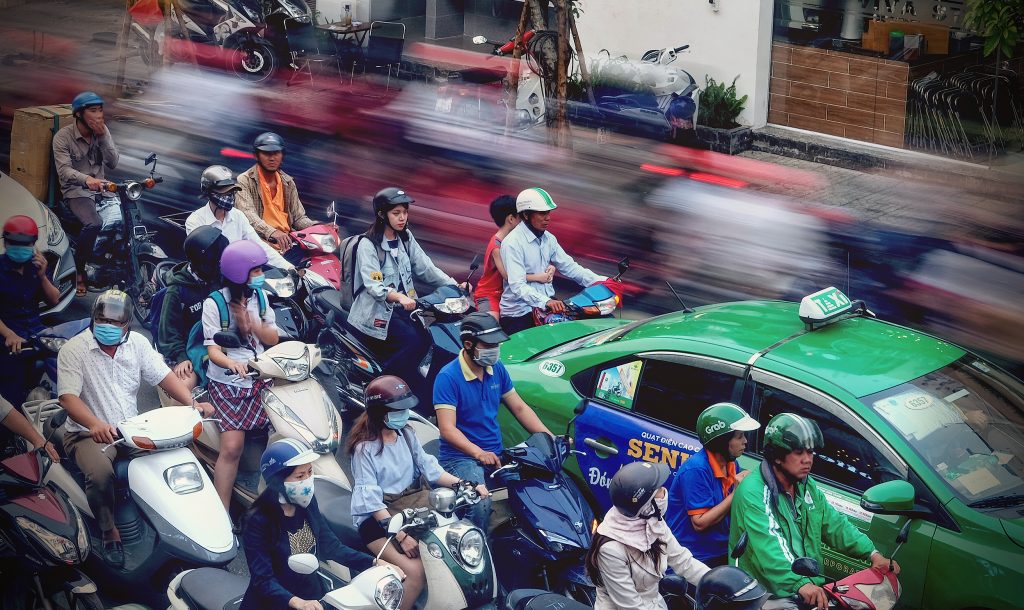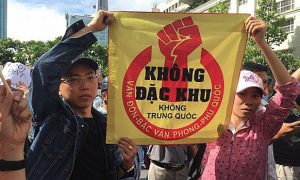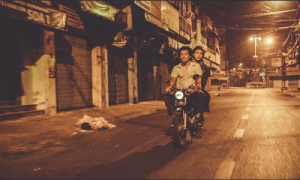On 7 December, Grab drivers in Hanoi went on strike to oppose the company significantly raising the level of commission it takes. Workers gathered outside Grab’s main Vietnam office and rode around the streets of the capital. A similar strike occurred in Ho Chi Minh City, the country’s biggest city, over the same issues. A Hanoi-based journalist for Channel News Asia called the Hanoi strike “rare”. But I didn’t think so. Indeed, a couple of days later, drivers for Be also went on strike. There have been a number of reports in recent years of strikes by ride-hailing and delivery app drivers. So I decided to map them, creating a database that will enable us to see any strike trends.
After trawling back through news reports, I have identified 13 strikes from 2017–20. These have been put on a Google map, below. For each, I have included the date, location and a summary of the strike. The map is a work in progress, and will be updated with new strikes when they occur. Hopefully the data will become crowdsourced, with drivers and others providing information that can be put on the map.
Vietnam is famous for having had thousands of strikes over the past 15 years or so. These are still, however, overwhelmingly in industrial manufacturing sectors. It is perhaps too early to say, but app-based driver strikes may come to represent a shift, with strikes beginning to rise in service sectors.
It is not surprising that there have been a number of strikes in this sector. Drivers often report having to work 12 to 16 hours a day to make enough money. They drive on dangerous and polluted streets, and also face violence and theft. As in many other places around the world, they are not legally classed as workers so have few labour law protections, including no minimum wages. As one Grab driver put it to Vietnamese website ICT News about the recent December 2020 strike: “There is nobody to protect us so we must instead gather here to oppose”.
All of the current strikes on the map were in Hanoi or Ho Chi Minh City. They have all been by motorbike drivers, Vietnam’s iconic form of transport, although taxi drivers have sometimes also taken part. Six strikes have been undertaken by Grab drivers—unsurprisingly, as the company represents 74.6% of Vietnam’s ride-hailing market and a large chunk of the food delivery market. Three strikes were by Be drivers, two by Go-Viet drivers (which was Gojek’s Vietnamese name before it rebranded as simply Gojek), one by Now.vn delivery drivers, and one by Uber drivers (which has since exited the Southeast Asian market). Strike numbers have increased each year; one in 2017, three in 2018, four in 2019, and five in 2020.
Levels of commission have been the major grievance, with drivers in nine strikes demanding that the percentage taken by the company per ride be reduced. Bonus levels were a demand in six strikes, while tax levels featured in three. All of the strikes have been defensive strikes; that is, they were primarily opposing changes—such as an increase in the percentage taken by the companies, or an introduction of more stringent conditions for bonuses—rather than demanding improvements on existing conditions.
All but one of the strikes involved drivers gathering outside the companies’ offices, and sometimes also driving around streets. The exception to this is the earliest strike, by Grab drivers in Hanoi in August 2017. Here, they switched off their apps and rode around the city, calling on others to do the same, and were also active on social media. They argued with drivers who refused to take part and booked fake rides—posing as customers wanting long journeys and then not turning up—which caused a lot of tensions between the strikers and drivers who did not take part.
All strikes were organised by workers themselves. Drivers have no official collective organisation. The state-led Vietnam General Confederation of Labour (VGCL), the country’s only legal trade union federation, does not organise strikes. While it is trying to increase its presence among drivers, currently this is still limited.
Information on how drivers organised is only available for a couple of strikes. In these cases, they coordinated on social media; presumably, the same is the case for the other strikes. In at least two cases (both strikes by Grab drivers in Hanoi, one in January 2018 and the recent one in December 2020) a group of driver representatives went to have a discussion with the company. In a larger number of cases, workers printed banners explaining why they were striking and what their demands were. These actions indicate quite a sophisticated level of workers’ self-organisation, far beyond mere outbursts of inchoate anger and frustration.
While 13 strikes in the sector over four years is not enough to be called a strike wave, it is definitely a trend—and certainly not “rare”. I do not know of any other company in Vietnam which, like Grab, has faced six strikes in four years. The map will allow us to track how these evolve over time, and see if drivers develop any sustained forms of organisation.
 Facebook
Facebook  Twitter
Twitter  Soundcloud
Soundcloud  Youtube
Youtube  Rss
Rss 


